Nammun Tobang (남문토방)
4.6Km 2019-05-07
73-5, Namdaemunsijang-gil, Jung-gu, Seoul
+82-2-778-6727
This restaurant offers customers loach soup in Gyeongsang-do style and fried loach. Smoked duck shabu shabu and vegetables, as well as Smoked duck casserole are also a good choice.
Hanok Guesthouse Dongchonchae [Korea Quality] / 한옥 게스트하우스 동촌재 [한국관광 품질인증/Korea Quality]
4.6Km 2021-03-26
21-10, Jahamun-ro 11-gil, Jongno-gu, Seoul
Built in 1939, Dongchonchae was designated as Seoul Well Hanok by the Seoul Metropolitan City in 2016. In 2020, this hanok (traditional Korean house) received the Certificate of KOREA QUALITY from the Korea Tourism Organization in the Heritage Hanok field in recognition of its historicity and quality of services. Dongchonjae is located in the western side of Gyeongbokgung Palace, at Seochon. When one passes through its main gate, one sees the yard, with anchae (women's quarters), sarangchae (men's quarters), and byeolchae (detached quarters) surrounding the plot. Anchae has four rooms, daecheong (wood-floored main hall), a kitchen, and a restroom. One of the rooms is used for tea ceremonies as well. Outside of the sarangchae and byeolchae, which are the living spaces for the owners, visitors have free access to the numaru (raised open floor) and the yard. The anchae’s rooms “Bom” and “Yeoreum” can accommodate 2 to 3 adults each, while the rooms “Gaeul” (Tea Room) and “Gyeoul” are optimal for two. The building is rented out as a whole, so no more than one group may stay in the building at any given time. Standard occupancy is four persons, and eight is the maximum number. There are two restrooms, one within the anchae building, one out in the backyard.
Cooking is not allowed in the kitchen, but guests are free to bring in outside food. Experience programs on offer include nighttime exploration of Seoul City Wall, tea ceremony, folk songs, and rice cake making. Additional payment is only required for rice cake making. Guests may choose between two types of complimentary breakfast: Korean, which comes with rice, soup, and three side dishes; and Western, which comes with bread, salad, and coffee. There are a 100-in screen and mini projector for film watching in the yard or daecheong. Towels, toiletries, hair dryer, bottled water, traditional tea, and capsule coffee are included. The kitchen is equipped with kitchen utensils, a microwave, and a coffee pot, enough for instant foods. Guests also have access to refrigerator and washing machine
Podam (포담)
4.6Km 2021-03-22
11, Jahamun-ro, 9-gil, Jongno-gu, Seoul
+82-2-733-0831
A store featured in Korean gourmet programs. This Chinese (cuisine) restaurant is located in Jongno-gu, Seoul. The most famous menu is dim sum.
Centre Culturel Sejong (세종문화회관)
4.6Km 2023-11-01
175, Sejong-daero, Jongno-gu, Seoul-si
+82-2-399-1000
Le Centre Sejong a été construit à Gwanghwamun en 1978. Il abrite un grand théâtre, un petit théâtre, une galerie d’art et différentss espaces pour la réalisation de différentes représentations culturelles et expositions.
Le grand théâtre du Centre Sejong possède notamment les plus grandes orgues en Asie ainsi qu'une scène majestueuse. Il peut accueillir 3.822 personnes alors que sa scène peut convenir à de nombreuses sortes de performances telles que des représentations musicales, théâtrales, du ballet, des films, etc.
La galerie d’art du Centre Sejong se compose en réalité de trois galeries. Toutes les trois proposent des espaces d’exposition d’avant-garde. Le Centre Sejong possède également un magasin d‘objets d’art, des salles de conférences et plusieurs salons spacieux.
Cheonghakdong Heukyeomso (청학동흑염소)
4.6Km 2021-03-25
356, Yeongdeungpo-ro, Yeongdeungpo-gu, Seoul
+82-2-833-3638
This is a place where you can enjoy various black goat dishes that are good for the health. This restaurant's signature menu is goat hot pot. This Korean dishes restaurant is located in Yeongdeungpo-gu, Seoul.
New Seoul Hotel (뉴서울호텔)
4.6Km 2021-05-11
16, Sejong-daero 22-gil, Jung-gu, Seoul
+82-2-735-8800
New Seoul Hotel is conveniently located in central Seoul near City Hall, providing guests with easy access to shopping, sightseeing, and more. The guestrooms are outfitted with modern amenities for a comfortable stay, and the hotel has several dining, entertainment and convenience facilities such as a business center, a souvenir shop and men's sauna.
Kumkang, branche de Yeongdeungpo (금강제화 영등포본점)
4.6Km 2011-08-18
18, Yeongjung-ro, Yeongdeungpo-gu, Seoul-si
+82-2-2678-1052
Kumkang est une marque de chaussures coréenne emblématique. Elle propose des chaussures habillées, des baskets, des chaussures pour tous les jours, et élargit peu à peu sa gamme de produits aux accessoires et aux vêtements.
La branche de Yeongdeungpo possède un choix particulièrement large de chaussures habillées et de sacs. Au sous-sol se trouve également un rayon de tailles spéciales. Les chaussures habillées rehaussantes pour hommes et femmes, les sandales pour femmes et les chaussures de golf sont très populaires auprès des clients.
Libuk Sonmandu (리북손만두)
4.6Km 2019-08-28
17-13, Mugyo-ro, Jung-gu, Seoul
+82-2-776-7361
Libuk Sonmandu restaurant is located deep in the alleys behind Seoul City Hall in the Mugyo-dong area. It is famous for kimchimari bap and sonmandu (handmade dumplings). Kimchimaribap is rice in a soup of kimchi and ice cubes with various added flavorings that originated in North Korea. This is a refreshing dish for summer. Other items on the menu are bindaetteok (mung bean pancake) and mandu jeongol (dumpling hot pot).
Gungjeon Baekban Samgyeopsal (궁전백반삼겹살)
4.6Km 2021-03-25
139-2, Yeongsin-ro, Yeongdeungpo-gu, Seoul
+82-2-2676-5472
It is a place where you can enjoy various main and side dishes. This Korean dishes restaurant is located in Yeongdeungpo-gu, Seoul. The most famous menu is grilled pork belly.
Hwangudan (환구단)
4.6Km 2020-05-07
112, Sogong-ro, Jung-gu, Seoul
+82-2-3396-5842
Hwangudan est un
rituel connu aussi sous les noms de Jecheondan ou Hwandan. Ce rituel en l’hommage
des cieux tire son origine du confucianisme. La première pratique a eu lieu le
premier mois de l’an 2 du règne du roi de Goryeo Seongjong (983), et après
plusieurs abolition et remise en pratique, ce rite prit fin définitivement au début
de l’ère Joseon. Durant l’an 2 du règne de Sejo (1456), cette cérémonie fut
momentanément remise en pratique mais prit fin en 1457. La dernière pratique de
ce rituel pendant l’ère Joseon a été en 1464. La prochaine pratique eut lieu en
1897, an 34 du règne de Gojong, année ou ce dernier se donna le titre d’empereur
et la péninsule devint aussi l’Empire de Corée. Actuellement ce qu’il reste de
l’autel de Hwangudan est le Hwanggungwoo et 3 figures en plâtre. Hwanggungwoo a
été finalisé 2 an après la construction de l’autel Hwangudan soit en 1899. A côté
de Hwanggungwoo se trouvent ces 3 figures en plâtre symbolisant un instrument
de musique utilisé lors du rituel. Maintenant, la grande partie de l’autel Hwangudan
se trouve à l’hôtel Joseon et le pavillon Hwanggungwoo se trouve dans le jardin
Nambukbyeon.

![Hanok Guesthouse Dongchonchae [Korea Quality] / 한옥 게스트하우스 동촌재 [한국관광 품질인증/Korea Quality]](http://tong.visitkorea.or.kr/cms/resource/96/2705896_image2_1.jpg)
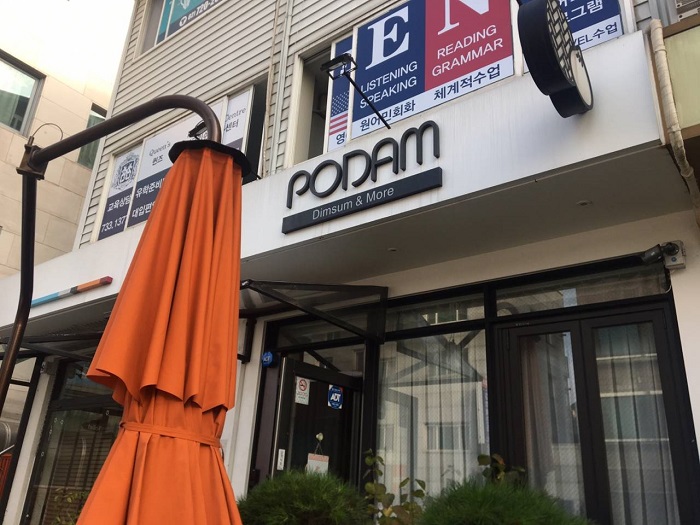
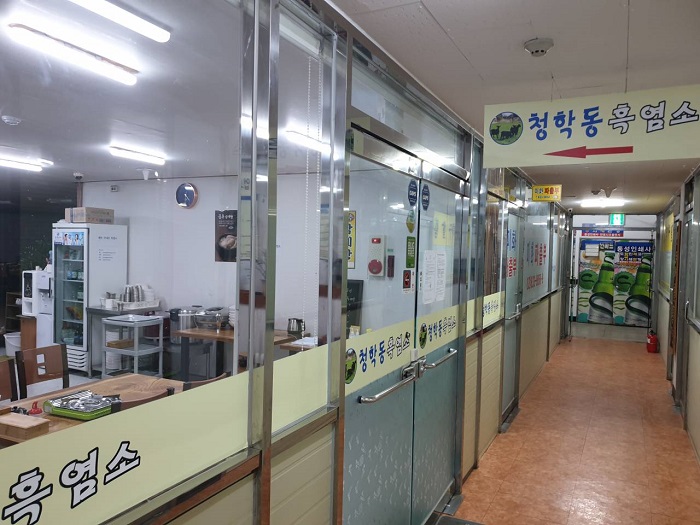
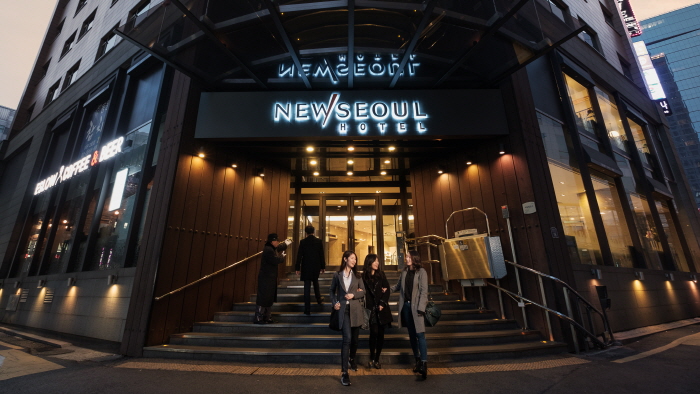
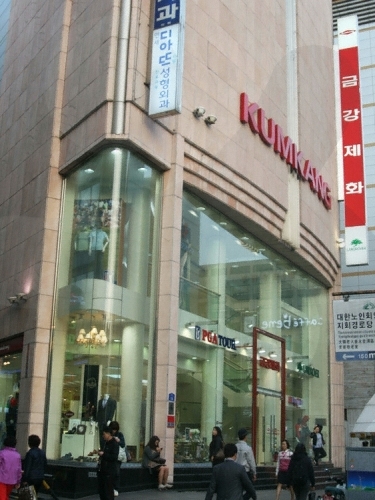
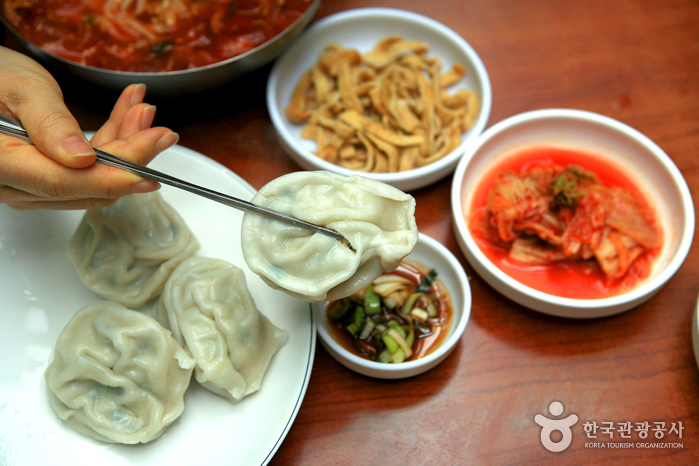
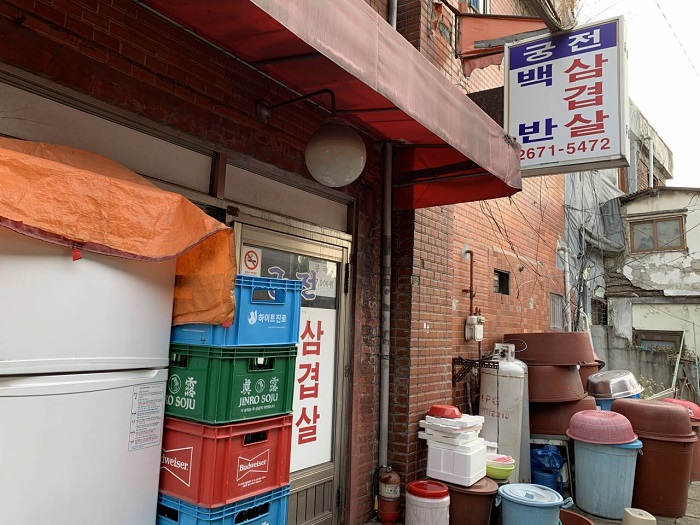
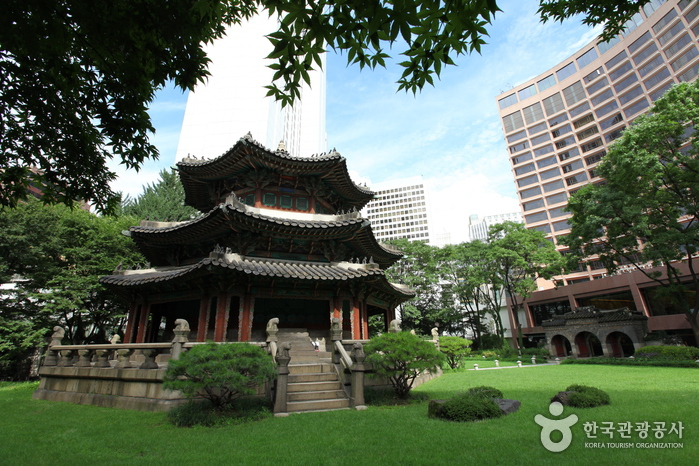
 Français
Français
 한국어
한국어 English
English 日本語
日本語 中文(简体)
中文(简体) Deutsch
Deutsch Español
Español Русский
Русский